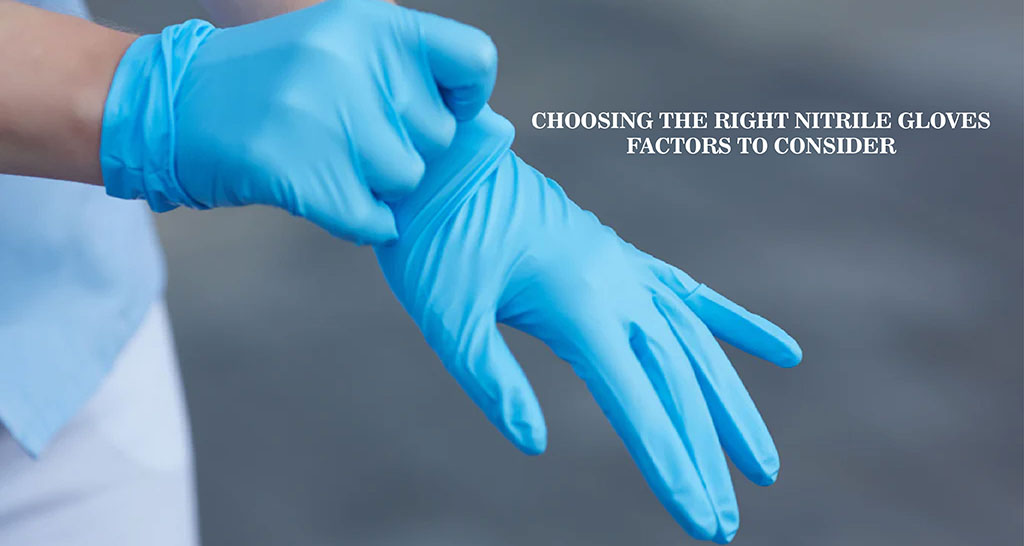Are you looking for nitrile gloves but unsure where to begin? You’re in the right place! Choosing the perfect pair is more than just selecting a size—it’s about understanding the unique benefits and features each type provides.
Moreover, from medical professionals to mechanics, nitrile gloves are a critical component for safety and hygiene across various industries. So it’s important that you do not rush to make your choice.
Don’t worry, though—we’re here to help! Below, we’ll cover all the key factors you need to consider when buying these gloves. But first, let’s cover the basics.
Understanding Nitrile Gloves and Their Uses
Nitrile gloves are a popular disposable glove made from synthetic rubber. Unlike latex, nitrile is resistant to chemicals and safe for people who are allergic to latex. This makes them a great choice in medical and industrial settings.
As a matter of fact, there are numerous nitrile glove uses for doctors, nurses, and laboratory technicians. They wear them to protect against infections during procedures. Plus, in industries like automotive, food services, and cleaning, workers use them to keep their hands safe from harsh chemicals and contaminants.
These gloves are strong and provide excellent protection. They come in various thicknesses tailored for different tasks. For instance, thinner gloves offer more precision and sensitivity, ideal for medical examinations. On the other hand, thicker ones are perfect for handling chemicals and heavy-duty cleaning.
In essence, with a range of sizes and styles available, nitrile gloves are versatile tools for safety and hygiene across numerous professions. That being said, let’s learn how to select the right nitrile gloves.
Key Considerations for Selecting Nitrile Gloves
Here’s a detailed guide on what to look for:
1. Check for Allergies and Sensitivities
Are you allergic to anything or have any skin sensitivities? Even if your answer is “No,” it’s crucial to keep these concerns in mind. Typically, nitrile gloves are latex-free, making them a safe option for those with latex allergies. However, they can still contain allergens like sulfur or chemical accelerators used in manufacturing.
To protect your skin and ensure comfort, opt for gloves certified with the American Society for Testing and Materials standards. This careful selection will help you avoid allergic reactions and keep you comfortable while you work.
2. Consider Thickness and Durability
The next thing you need to pay attention to is the thickness and durability of gloves. As stated above, the industry-strength thick gloves offer better protection for tough jobs, like handling heavy machinery or dealing with strong industrial cleaning chemicals.
However, thicker gloves can reduce your ability to feel through them, which might affect tasks requiring fine touch. On the flip side, thinner gloves are ideal for it. So, you need to create a balance between protection and the need for sensitivity.
The purpose is to ensure that your gloves can handle the demands of your specific activities without sacrificing comfort or dexterity.
3. Evaluate Fit and Comfort
The glove’s size can drastically change its comfort and effectiveness. If gloves are too tight, they can restrict movement and cause hand fatigue. It can potentially lead to long-term discomfort or even injury. Similarly, they might slip off or make it hard to handle materials and tools accurately if they’re too loose.
Let’s suppose you are a dentist who needs precise control while working with small tools. In this scenario, well-fitted gloves can significantly enhance the agility and efficiency of your work. It’s also important to consider the glove’s cuff length, which should cover your wrist adequately for added protection.
Pro Tip: Always refer to the manufacturer’s sizing chart to find the perfect fit for your hands. This willIt’ll ensure maximum comfort and protection in your work environment.
4. Assess Texture and Grip
Last but not least, textured fingertips or palms provide enhanced grip, especially in wet or oily conditions. It allows you to handle tools and materials securely. This is indeed a small detail but is quite beneficial for tasks requiring precision and control.
But how would you know if you need gloves with textures? Well, you can determine this by examining the specific environment and tasks you encounter daily. If you need to have a strong grip on something, you need to invest in quality gloves. They will not only improve efficiency but also reduce the risk of accidents and injuries.
Final Thoughts
Understanding the specific use of nitrile gloves is crucial. Are they for medical examinations, chemical handling, or food service? Different environments require different levels of protection and durability. So, make sure to keep this guide handy the next time you are browsing for gloves.

